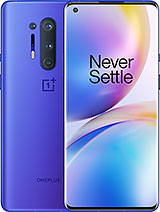OnePlus 8 Pro Camera Review By DXOMARK
Hi I'm Rachel from DXO marks today we're talking about the camera performance of the new flagship device from one class. The eight pro one class hasn't compromised on the phones, cameras with standard wide ultra-wide and telephoto lenses. It also added a near infrared sensor that the company calls a color filter camera, so can one press challenge Samsung, Apple and Huawei for a share of the flagship market, let's find out by seeing how the eight pro did in our test. The one plus eight pros triple camera setup, isn't all that different from the seven pro the phone's main camera features a large 48, megapixel quad Bayer sensor that results in a 12 megapixel output with optical image. Stabilization, it's new ultra-wide shooter also comes with a 48 megapixel sensor and a 14 millimeter lens for video. The OnePlus 8 pro shoots, 4k footage at either 60 or 30 frames per second, and it's all powered by Qualcomm's, fast 865 chipsets.
In brighter artificial light conditions, exposures are mainly good on portraits and backgrounds, but color is a little yellow under street lighting. Also, detail is generally high on static subjects. Ghosting on moving elements is apparent overall, the main camera on the OnePlus 8 pro is capable of excellent images with close to the best exposure, color and detail. We've seen now, let's take a closer look at each subs core and compare the eight pro's image quality against some key competitors in exposure and contrast the OnePlus 8 pro did very well for outdoor images in our perceptual testing. It's not quite the best for dynamic range, with some minor highlight clipping visible in high contrast or backlit seems you can see in this example, our top performer, the p40 pro captures slightly more highlight detail on the bright sunlit wall, but the OnePlus 8 pro displays wider dynamic when compared with the iPhone 11 Pro max in this indoor scene, the OnePlus 8 pro again sits between the p40 Pro and the iPhone 11 Pro max for exposure performance.
Both target exposure and dynamic range are acceptable, but the p40 pro is able to provide a brighter exposure inside as well as preserving. More highlight detail outside color is a strength for the OnePlus 8 pro with generally nice, rendering accurate white balance and consistent results. Colors are vivid and pleasant in all lighting conditions, although reds are sometimes a little over saturated. In many examples, the OnePlus 8 pro has some of the most neutral white balance we've seen, although slight casts, are occasionally visible. The device controls white balance, at least as well, and often better compared to the top-tier devices in our database.
The OnePlus 8 pro squad Bayer sensor processing, delivers a pretty good texture versus noise trade-off, but it's just a little behind our best performers. For these attributes in outdoor images, the level of detail is high. You can see in this example, however, slightly aggressive sharpening can make fine details. Look a little unnatural fine face. Details are clearly sharper on the OnePlus 8 pro, while the find x2 pro achieves good detail.
Well, not over enhancing texture on the skin. The same holds true for noise reduction in this low artificial lighting example, the OnePlus 8 pro displays good detail, but slightly unnatural detail. Preservation compared with the p40 pro, which has more natural, rendering and less visible noise detail is noticeably lower and with more prevalent noise. On the iPhone example, the OnePlus 8 pro doesn't often display serious artifacts, but a number of small penalties were applied to its score. One of the most obvious artifacts included a loss of sharpness towards the corners of the frame with some ghosting on moving subjects and aliasing, although it occurs infrequently flare on backlit images is often very obvious with large light.
Streaks running across the image like in the image of the tree. Zoom is an opportunity for improvement on the OnePlus 8 Pro, even though results are fairly good at all magnification. You can see in this medium-range example. The p40 Pro and find x2 Pro are able to achieve improved detail and edge definition with less noise compared to the OnePlus 8 Pro. The find x2 Pro is more defined in the center of the image, but suffers a loss of detail in the outer field where the OnePlus and Huawei devices are able to maintain consistent sharpness across the frame at approximately x8 magnification detail, noticeably drops off on the 1 plus 8 Pro shot with both edge artifacts and noise.
Increasing the find x2 Pro keeps noise and edges clean, but detail is softer compared to the p40 Pro, which really excels at the long distances, while overall, the OnePlus 8 Pro does a reasonable job on both shots with pleasant depth of field effect and nice shape to the spotlights we did observe a few errors in this scene. The OnePlus 8 pro isn't quite as good as the iPhone 11 Pro max for exposure and color, but it delivers slightly greater detail compared to the competitors at close inspection. You can see some rather jarring edge. Artifacts around the subjects hand on the OnePlus 8 Pro example, which the Huawei and Apple devices are able to avoid. In another coca example, noises uniform across blurred and sharp areas on the 1+8 prowl with consistent results.
Each time a natural gradient effect is also applied with areas both in front and behind the subject. The field of view from its ultra-wide camera is not quite as wide as competitors and slight exposure inconsistencies, make the results a little hit or miss good color and texture are the ultra-wide cameras main strengths, but noise is often visible. Some over correction for geometric distortion can squish faces position towards the edges of the frame like in this example, leading to unreal body proportions. In our series of night photography tests, we found the 1 plus 8 pros flash produced, portraits with good levels of detail, nice exposure and good skin tones in auto flash mode, the flash triggers appropriately when a face is detected. Although the flash exposure can be a little low, it generally provides enough illumination for a nice portrait without any harsh overexposure.
Despite good detail on portraits dynamic range to record any ambient light is limited, resulting in dark backgrounds. Turn the flash off and exposure a slightly low on cityscapes, but images are very usable and highlights are well controlled. Images can be slightly out of focus with low detail and in very dark scenes. Images suffer from some exposure, instabilities and often very strong noise. Let's take a look at the pros and cons of the 1+8 pro.
The pros are good detail, low noise, accurate exposure, nice color and detail and ultra-wide shots, high detail and low noise using flash and effective stabilization and video. The cons are slight white balance cast outdoors minor, highlight clipping on challenging scenes light under exposure and noise in night shots. The 1+8 pro achieved an overall DXO mark score of 119 with 126 in photo and 103, and video, thanks. So much for watching this review make sure to subscribe for more videos from the TO mark.
Source : DXOMARK














![LG V50S/G8X ThinQ Unboxing [4K]](https://img.youtube.com/vi/BNOjg3ozNRs/maxresdefault.jpg )











